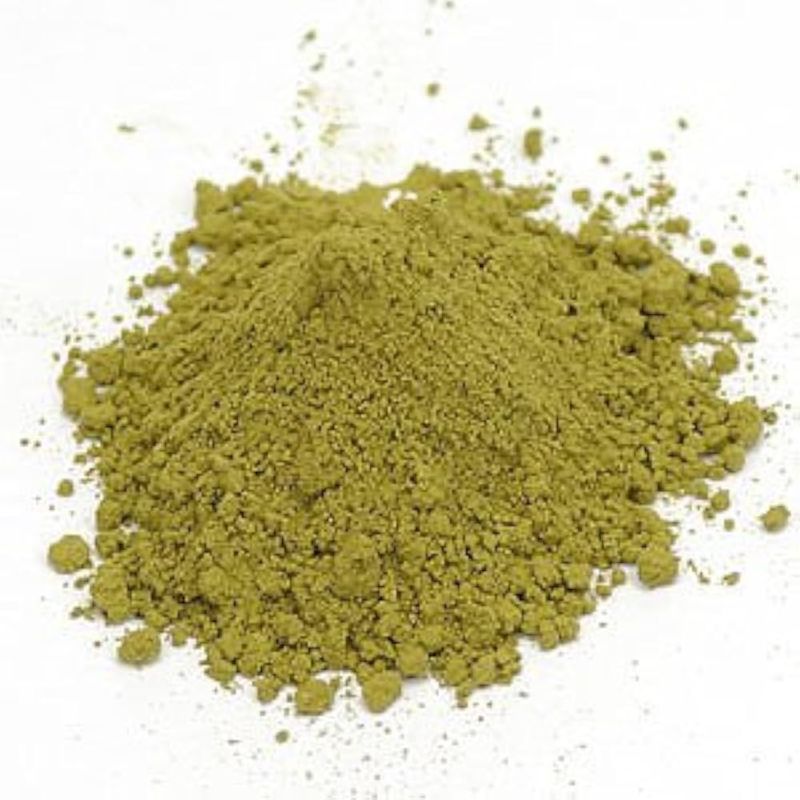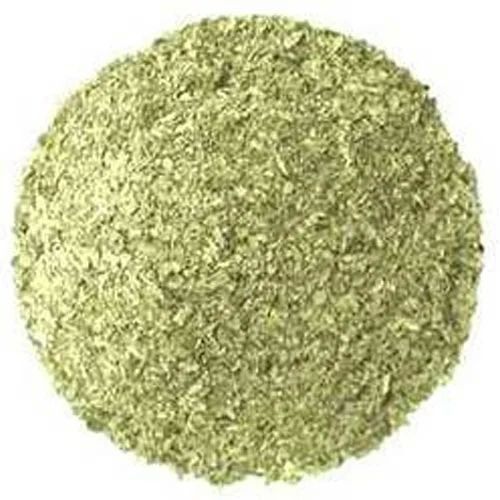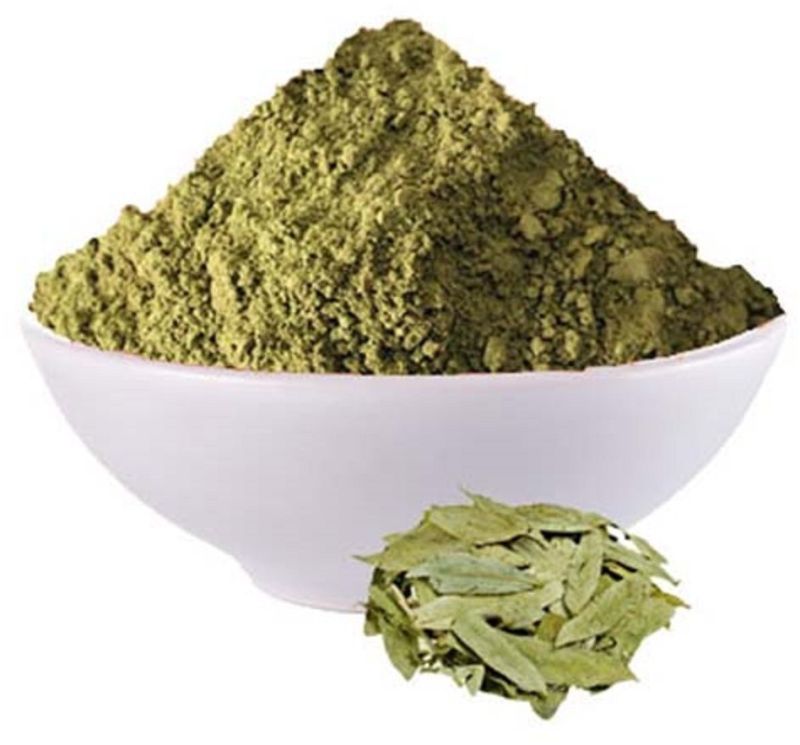nitin@vertexusglobal.com - GST NO. : 19ABAFV5939N1ZD
- Send Email
Senna Products
Leading Exporters, Wholesaler and Trader of Senna Extract, Senna Pods, Senna Pods Powder, Senna Dried Leaves, Senna Tea Cut Leaves and Senna Leaves Powder from Kolkata.
| Business Type | Exporter, Supplier, Trader |
| Country of Origin | India |
| Purity | 100% |
| Shelf Life | 1 Year |
| Style | Dried |
| Usage | Medicinal, Food Additives |
| Form | Powder |
| Color | Brown |
| Botanical Name | Cassia Angustifolia |
Indian Senna also known as Sonamukhi (Botanical name – Cassia angustifolia) is an annual leguminous herb cultivated extensively in the southern parts of the country for its pods and leaves which are used in Ayurveda as well as in modern system of medicines. Senna leaves is generally used for its laxative properties. In scientific study of Senna, anthraquinones, glycosides, sennosides, numerous minor sennosides have been identified, and all appear to contribute to the laxative effect. These compounds work as a laxative by smoothing & relaxing the tissues, as digested food moves through the intestines. It helps to eliminate Vitiated & putrefied Pitta through motion and gives relief in fever caused by excessive Pitta. Senna supports reduction of ascitis (fluid accumulation in stomach layers) with other medicines. Senna aids in removal of toxins from skin layer and removing it from intestines. It helps to remove extra phlegm from lungs and reduce intensity of cough.
- Sennosides A and B: These are the principal active ingredients and are dimeric glycosides, meaning they are composed of two anthraquinone molecules attached to sugar units. They account for up to 80% of senna's biological activity.
- Sennosides C and D: These are hetero-dianthrone glycosides and are present in smaller amounts.
The leaves and pods of Senna are known to contain sennosides, with reported levels ranging from 2.5% to 3.6%. Specifically, Sennoside B content in pods is around 2.7%, while in leaves it is approximately 1.83%
Uses of Senna Leaves / Senna Pods
- Natural Laxative: Used to relieve constipation by promoting bowel movements.
- Herbal Tea: Senna leaves are commonly brewed into a detoxifying tea.
- Skin Care: Used in skincare for its antibacterial properties to help treat acne.
- Digestive Health: Helps in cleansing the digestive system and improving gut health.
- Traditional Remedy: Known in traditional medicine for its use in detoxifying and weight management.
Benefits of Senna Leaves / Senna Pods
- Relieves Constipation: Acts as a gentle, natural laxative.
- Detoxifies: Helps in cleansing the digestive system.
- Promotes Weight Loss: Aids in detoxification and weight management.
- Supports Skin Health: Helps reduce acne and skin inflammation.
| Business Type | Exporter, Supplier, Trader |
| Country of Origin | India |
| Storage Instructions | Dry Place |
| Shelf Life | 6 Months |
| Style | Dried |
| Usage/Application | Spices, Medicinal |
| Grade Standard | Medicine Grade |
| Color | Green & Brown |
| Quality Available | A Grade |
| Cultivation Type | Organic |
| Botanical Name | Cassia Angustifolia |
Indian Senna also known as Sonamukhi (Botanical name – Cassia angustifolia) is an annual leguminous herb cultivated extensively in the southern parts of the country for its pods and leaves which are used in Ayurveda as well as in modern system of medicines. Senna leaves is generally used for its laxative properties. In scientific study of Senna, anthraquinones, glycosides, sennosides, numerous minor sennosides have been identified, and all appear to contribute to the laxative effect. These compounds work as a laxative by smoothing & relaxing the tissues, as digested food moves through the intestines. It helps to eliminate Vitiated & putrefied Pitta through motion and gives relief in fever caused by excessive Pitta. Senna supports reduction of ascitis (fluid accumulation in stomach layers) with other medicines. Senna aids in removal of toxins from skin layer and removing it from intestines. It helps to remove extra phlegm from lungs and reduce intensity of cough.
- Sennosides A and B: These are the principal active ingredients and are dimeric glycosides, meaning they are composed of two anthraquinone molecules attached to sugar units. They account for up to 80% of senna's biological activity.
- Sennosides C and D: These are hetero-dianthrone glycosides and are present in smaller amounts.
The leaves and pods of Senna are known to contain sennosides, with reported levels ranging from 2.5% to 3.6%. Specifically, Sennoside B content in pods is around 2.7%, while in leaves it is approximately 1.83%
Uses of Senna Leaves / Senna Pods
- Natural Laxative: Used to relieve constipation by promoting bowel movements.
- Herbal Tea: Senna leaves are commonly brewed into a detoxifying tea.
- Skin Care: Used in skincare for its antibacterial properties to help treat acne.
- Digestive Health: Helps in cleansing the digestive system and improving gut health.
- Traditional Remedy: Known in traditional medicine for its use in detoxifying and weight management.
Benefits of Senna Leaves / Senna Pods
- Relieves Constipation: Acts as a gentle, natural laxative.
- Detoxifies: Helps in cleansing the digestive system.
- Promotes Weight Loss: Aids in detoxification and weight management.
- Supports Skin Health: Helps reduce acne and skin inflammation.
| Business Type | Exporter, Supplier, Trader |
| Country of Origin | India |
| Storage Instruction | Dry Place |
| Shelf Life | 1 Year |
| Form | Powder |
| Purity | 100% |
| Processing Type | Raw |
| Usage/Application | Medicinal |
| Grade Standard | Food Grade |
| Color | Green |
| Botanical Name | Cassia Angustifolia |
Indian Senna also known as Sonamukhi (Botanical name – Cassia angustifolia) is an annual leguminous herb cultivated extensively in the southern parts of the country for its pods and leaves which are used in Ayurveda as well as in modern system of medicines. Senna leaves is generally used for its laxative properties. In scientific study of Senna, anthraquinones, glycosides, sennosides, numerous minor sennosides have been identified, and all appear to contribute to the laxative effect. These compounds work as a laxative by smoothing & relaxing the tissues, as digested food moves through the intestines. It helps to eliminate Vitiated & putrefied Pitta through motion and gives relief in fever caused by excessive Pitta. Senna supports reduction of ascitis (fluid accumulation in stomach layers) with other medicines. Senna aids in removal of toxins from skin layer and removing it from intestines. It helps to remove extra phlegm from lungs and reduce intensity of cough.
- Sennosides A and B: These are the principal active ingredients and are dimeric glycosides, meaning they are composed of two anthraquinone molecules attached to sugar units. They account for up to 80% of senna's biological activity.
- Sennosides C and D: These are hetero-dianthrone glycosides and are present in smaller amounts.
The leaves and pods of Senna are known to contain sennosides, with reported levels ranging from 2.5% to 3.6%. Specifically, Sennoside B content in pods is around 2.7%, while in leaves it is approximately 1.83%
Uses of Senna Leaves / Senna Pods
- Natural Laxative: Used to relieve constipation by promoting bowel movements.
- Herbal Tea: Senna leaves are commonly brewed into a detoxifying tea.
- Skin Care: Used in skincare for its antibacterial properties to help treat acne.
- Digestive Health: Helps in cleansing the digestive system and improving gut health.
- Traditional Remedy: Known in traditional medicine for its use in detoxifying and weight management.
Benefits of Senna Leaves / Senna Pods
- Relieves Constipation: Acts as a gentle, natural laxative.
- Detoxifies: Helps in cleansing the digestive system.
- Promotes Weight Loss: Aids in detoxification and weight management.
- Supports Skin Health: Helps reduce acne and skin inflammation.
| Business Type | Exporter, Supplier, Trader |
| Usage | Used to make medicine |
| Style | Dried |
| Type | Herbal |
| Color | Green |
| Botanical Name | Cassia angustifolia |
| Drying Process | Sun Dried |
Indian Senna also known as Sonamukhi (Botanical name – Cassia angustifolia) is an annual leguminous herb cultivated extensively in the southern parts of the country for its pods and leaves which are used in Ayurveda as well as in modern system of medicines. Senna leaves is generally used for its laxative properties. In scientific study of Senna, anthraquinones, glycosides, sennosides, numerous minor sennosides have been identified, and all appear to contribute to the laxative effect. These compounds work as a laxative by smoothing & relaxing the tissues, as digested food moves through the intestines. It helps to eliminate Vitiated & putrefied Pitta through motion and gives relief in fever caused by excessive Pitta. Senna supports reduction of ascitis (fluid accumulation in stomach layers) with other medicines. Senna aids in removal of toxins from skin layer and removing it from intestines. It helps to remove extra phlegm from lungs and reduce intensity of cough.
- Sennosides A and B: These are the principal active ingredients and are dimeric glycosides, meaning they are composed of two anthraquinone molecules attached to sugar units. They account for up to 80% of senna's biological activity.
- Sennosides C and D: These are hetero-dianthrone glycosides and are present in smaller amounts.
The leaves and pods of Senna are known to contain sennosides, with reported levels ranging from 2.5% to 3.6%. Specifically, Sennoside B content in pods is around 2.7%, while in leaves it is approximately 1.83%
Uses of Senna Leaves / Senna Pods
- Natural Laxative: Used to relieve constipation by promoting bowel movements.
- Herbal Tea: Senna leaves are commonly brewed into a detoxifying tea.
- Skin Care: Used in skincare for its antibacterial properties to help treat acne.
- Digestive Health: Helps in cleansing the digestive system and improving gut health.
- Traditional Remedy: Known in traditional medicine for its use in detoxifying and weight management.
Benefits of Senna Leaves / Senna Pods
- Relieves Constipation: Acts as a gentle, natural laxative.
- Detoxifies: Helps in cleansing the digestive system.
- Promotes Weight Loss: Aids in detoxification and weight management.
- Supports Skin Health: Helps reduce acne and skin inflammation.
| Business Type | Exporter, Supplier, Trader |
| Country of Origin | India |
| Part | Leaf |
| Shelf Life | 1Month |
| Type | Herbal |
| Color | Green |
| Cultivation Type | Organic |
| Botanical Name | Cassia Angustifolia |
Indian Senna also known as Sonamukhi (Botanical name – Cassia angustifolia) is an annual leguminous herb cultivated extensively in the southern parts of the country for its pods and leaves which are used in Ayurveda as well as in modern system of medicines. Senna leaves is generally used for its laxative properties. In scientific study of Senna, anthraquinones, glycosides, sennosides, numerous minor sennosides have been identified, and all appear to contribute to the laxative effect. These compounds work as a laxative by smoothing & relaxing the tissues, as digested food moves through the intestines. It helps to eliminate Vitiated & putrefied Pitta through motion and gives relief in fever caused by excessive Pitta. Senna supports reduction of ascitis (fluid accumulation in stomach layers) with other medicines. Senna aids in removal of toxins from skin layer and removing it from intestines. It helps to remove extra phlegm from lungs and reduce intensity of cough.
- Sennosides A and B: These are the principal active ingredients and are dimeric glycosides, meaning they are composed of two anthraquinone molecules attached to sugar units. They account for up to 80% of senna's biological activity.
- Sennosides C and D: These are hetero-dianthrone glycosides and are present in smaller amounts.
The leaves and pods of Senna are known to contain sennosides, with reported levels ranging from 2.5% to 3.6%. Specifically, Sennoside B content in pods is around 2.7%, while in leaves it is approximately 1.83%
Uses of Senna Leaves / Senna Pods
- Natural Laxative: Used to relieve constipation by promoting bowel movements.
- Herbal Tea: Senna leaves are commonly brewed into a detoxifying tea.
- Skin Care: Used in skincare for its antibacterial properties to help treat acne.
- Digestive Health: Helps in cleansing the digestive system and improving gut health.
- Traditional Remedy: Known in traditional medicine for its use in detoxifying and weight management.
Benefits of Senna Leaves / Senna Pods
- Relieves Constipation: Acts as a gentle, natural laxative.
- Detoxifies: Helps in cleansing the digestive system.
- Promotes Weight Loss: Aids in detoxification and weight management.
- Supports Skin Health: Helps reduce acne and skin inflammation.
| Business Type | Exporter, Supplier, Trader |
| Country of Origin | India |
| Storage Instruction | Dry Place |
| Shelf Life | 1 Year |
| Form | Powder |
| Purity | 100% |
| Processing Type | Raw |
| Usage/Application | Food, Medicinal |
| Grade Standard | Food Grade |
| Color | Green |
| Botanical Name x | Cassia Angustifolia |
Indian Senna also known as Sonamukhi (Botanical name – Cassia angustifolia) is an annual leguminous herb cultivated extensively in the southern parts of the country for its pods and leaves which are used in Ayurveda as well as in modern system of medicines. Senna leaves is generally used for its laxative properties. In scientific study of Senna, anthraquinones, glycosides, sennosides, numerous minor sennosides have been identified, and all appear to contribute to the laxative effect. These compounds work as a laxative by smoothing & relaxing the tissues, as digested food moves through the intestines. It helps to eliminate Vitiated & putrefied Pitta through motion and gives relief in fever caused by excessive Pitta. Senna supports reduction of ascitis (fluid accumulation in stomach layers) with other medicines. Senna aids in removal of toxins from skin layer and removing it from intestines. It helps to remove extra phlegm from lungs and reduce intensity of cough.
- Sennosides A and B: These are the principal active ingredients and are dimeric glycosides, meaning they are composed of two anthraquinone molecules attached to sugar units. They account for up to 80% of senna's biological activity.
- Sennosides C and D: These are hetero-dianthrone glycosides and are present in smaller amounts.
The leaves and pods of Senna are known to contain sennosides, with reported levels ranging from 2.5% to 3.6%. Specifically, Sennoside B content in pods is around 2.7%, while in leaves it is approximately 1.83%
Uses of Senna Leaves / Senna Pods
- Natural Laxative: Used to relieve constipation by promoting bowel movements.
- Herbal Tea: Senna leaves are commonly brewed into a detoxifying tea.
- Skin Care: Used in skincare for its antibacterial properties to help treat acne.
- Digestive Health: Helps in cleansing the digestive system and improving gut health.
- Traditional Remedy: Known in traditional medicine for its use in detoxifying and weight management.
Benefits of Senna Leaves / Senna Pods
- Relieves Constipation: Acts as a gentle, natural laxative.
- Detoxifies: Helps in cleansing the digestive system.
- Promotes Weight Loss: Aids in detoxification and weight management.
- Supports Skin Health: Helps reduce acne and skin inflammation.






